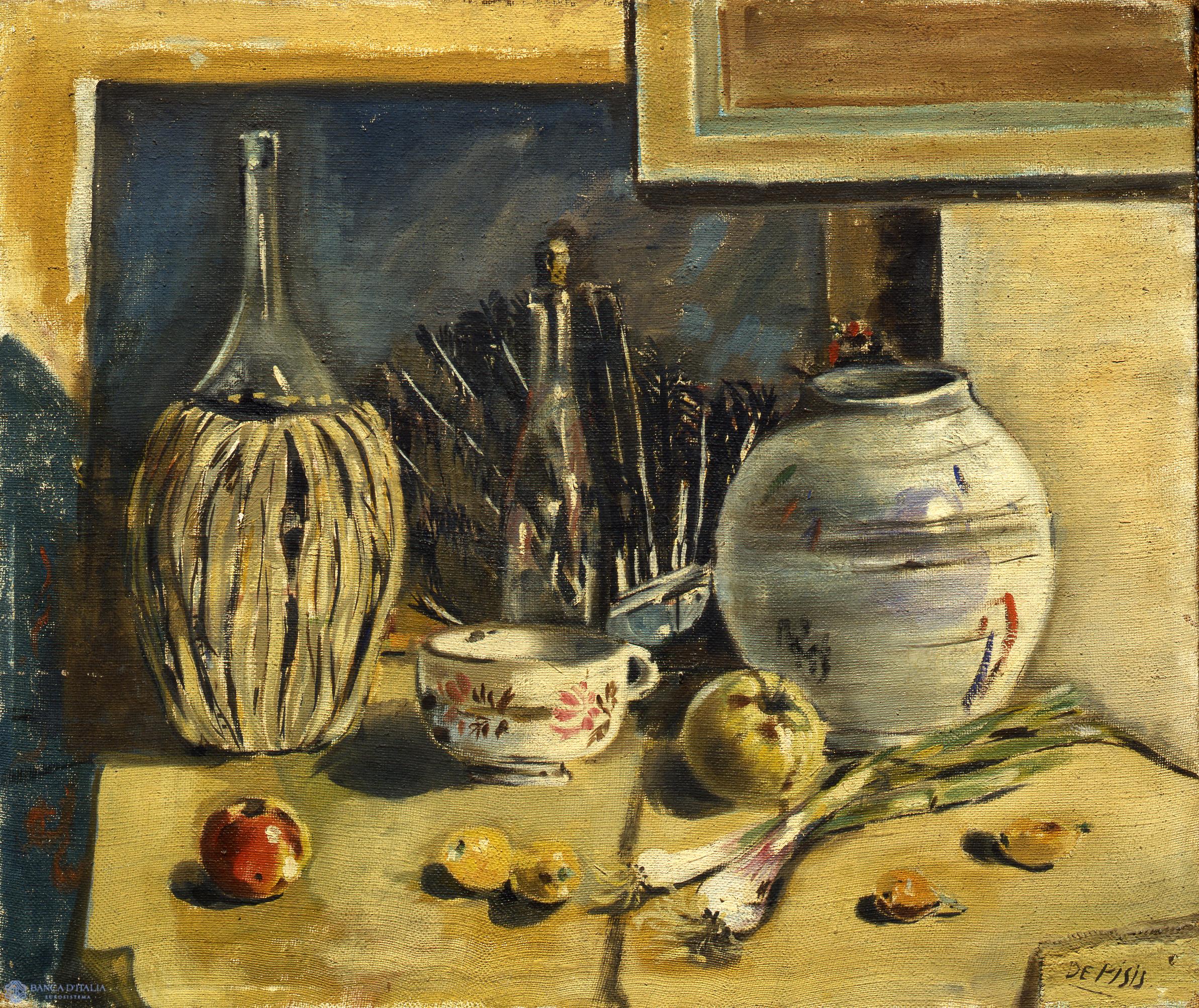This youthful still life of the “pittore marchesino,” as De Pisis liked to style himself, is crammed with objects: a flask, a vase, a cup, a mirror, a fan, and scattered here and there on the table that seems to slope gently towards the viewer, some fruit and vegetables. The only sign of the painter’s future direction is the painting-within-the-painting motif, barely alluded to by the frame that appears to the right.
By 1923 De Pisis had been in Rome for several years. In the spring of that year, during a few months’ stay in Assisi (where he worked as a substitute teacher in a secondary school), he made the final decision to become painter as well as poet and writer. Since his Ferrara years, he had been a friend of De Chirico, whom he also met in Rome. But in the numerous experiments of this time it was above all the Roman painting of the 1920s that guided and seduced him. Spadini’s work, and especially the still lifes of Socrate, led him towards a neo-seventeenth-century image of optical clarity, not yet in the thrall of that fleeting touch, which on his arrival in Paris would take him down much more personal and modern roads. But, as this canvas demonstrates, it was precisely during this Roman parenthesis that De Pisis definitively honed the technical tools that would soon enable him to enter his first mature phase as painter.
Filippo De Pisis, Natura morta con fiasco e ventola
Natura morta con fiasco e ventola
Painting
20th century AD
Still life

Artist
Date
1923
Material and technique
Oil on canvas
Measurements
63 x 73 cm
Compiler
Fabrizio D'Amico
